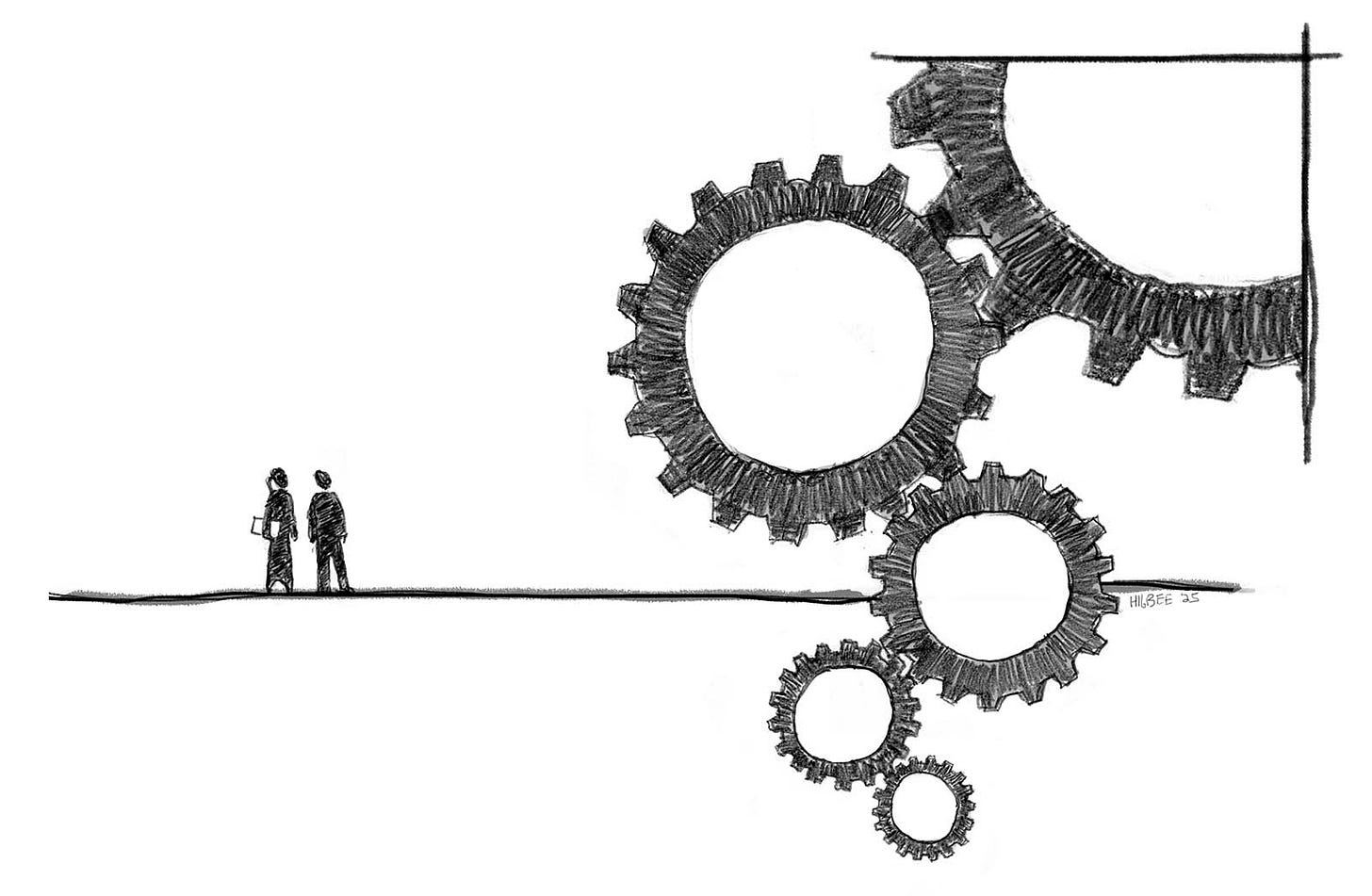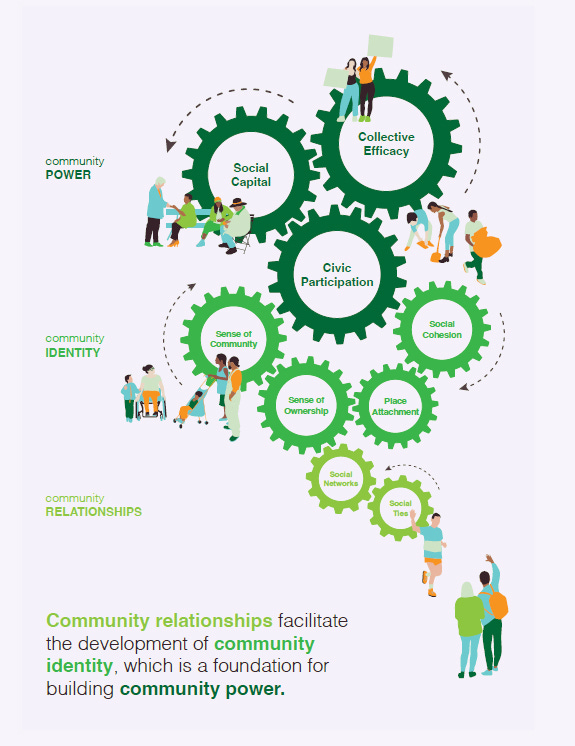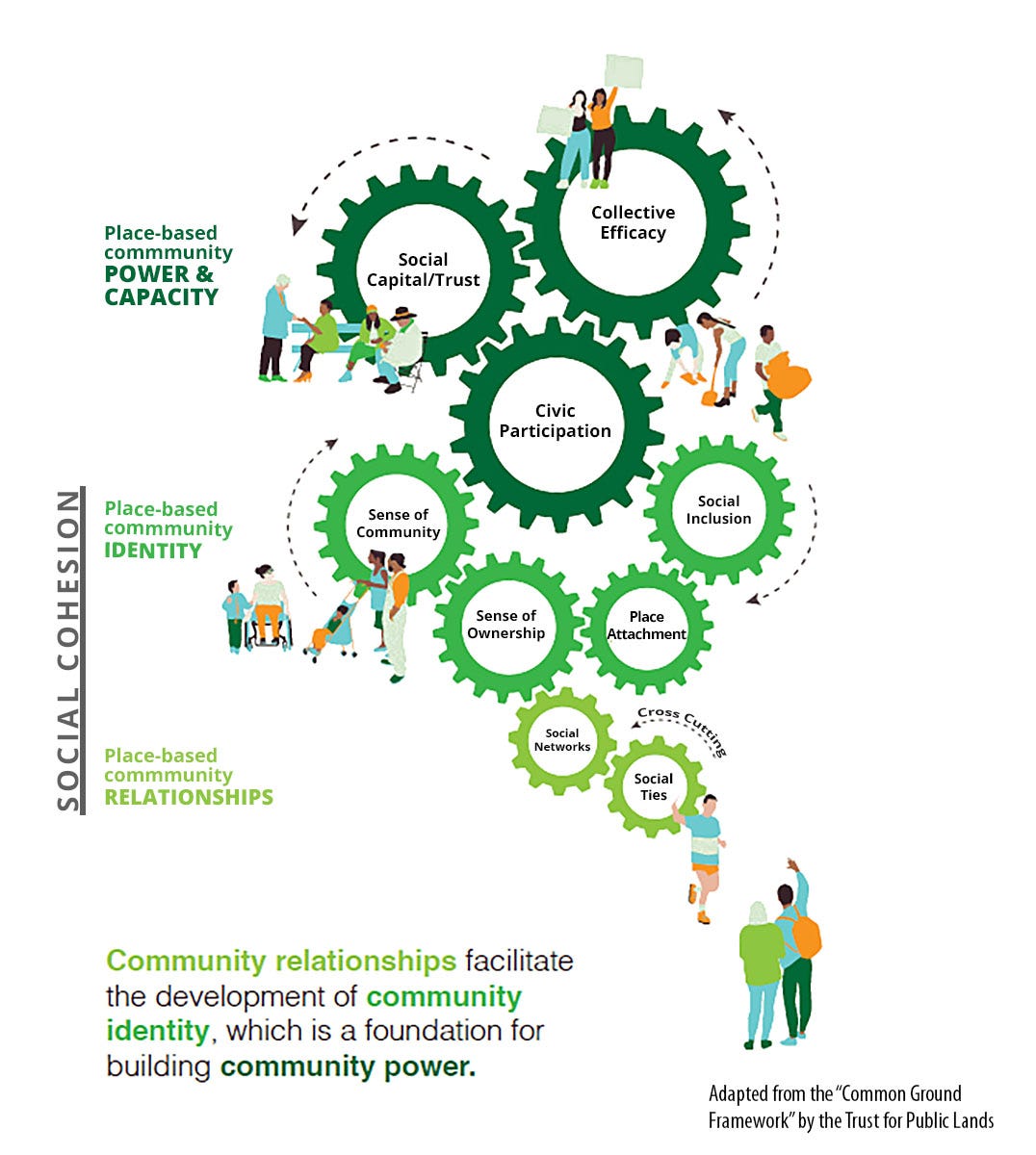This Simple Infographic about Community Explains Everything
...and helps us infuse social psychology into our community engagement practices. (Reading Time: about 5 minutes)
Entering the world of social psychology can be disorientating. It’s an academic discipline packed full of esoteric jargon and enigmatic theories.
But it’s important that we wade into their waters. Cross pollinating with social psychology is a critical step in re-framing and re-tooling our community engagement practices for our socially fragmented times.
For example, many folks are familiar with the concept of social capital. We can credit Robert Putnam’s book Bowling Alone (2000) for bringing this term into contemporary mainstream. However, peaking behind the Bowling Alone curtain reveals a much more tangled mess of competing definitions for social capital. Just take a quick look at the Wikipedia entry. Oh boy.
Other social psychology concepts can be equally dizzying: Social Ties, Social Cohesion, Social Efficacy, Social Networks. I consider myself somewhat savvy at navigating the dense terrain of academia, but the overlap between these concepts is head spinning.
How does one make sense of it all? And how do we apply all these concepts to how we work with communities?
Enter, the Trust for Public Land’s (TPL’s) Common Ground Framework. Published in 2023 as a “Green Paper” on public parks, this is one of the best distillations of social psychology I have seen. It deserves wider attention.
The brilliant part about TPL’s framework is that it groups all these confounding social psychology concepts into a simple structure: Community Networks facilitate the creation of Community Identity, which in turn supports Community Power. And everything else fits nicely into those three buckets.
I was a graphic designer in a previous life, so I’m a sucker for a good infographic. TPL delivers. It looks like this:
Now, I have some minor critiques of the framework. Although spelled out more clearly in the text of their paper, the infographic doesn’t fully capture the potential of place-based communities to bridge different identity groups and cultivate belonging. This is what paves our pathway towards civic renewal. It is the central theme of this Substack.
For example, one could look at TPL’s graphic and apply it to the social structure of a white supremacist group. That’s not what we are looking for, of course. And not what TPL intended.
So I’ve taken the liberty to make a few modifications to TPL’s infographic. Most of these changes simply reflect a more nuanced graphic articulation of the ideas within the text of the report. However, I also have a different interpretation of some social psychology concepts and how they relate to one another.
My revised graphic is below, but first here’s some explanation:
“Place-Based” before “Community”
Ugh. “Community.” I really wish the English language had more nuance with this word. It’s overused and vague.
The potential for social renewal resides within our “place-based communities,” like a town or neighborhood. This is the scale at which we are evolutionary wired to build meaningful relationships and connections. It’s where we can find agency and make a difference. It is seedbed of Democracy.
It always feels clumsy, but sticking “place-based” before “community,” gets the point across. So I stuck on the infographic.
Anyone have a better term?
“Cross Cutting” Social Relationships:
We increasingly live in siloed social identity groups. Our social media bubbles hinder our exposure to different ideas. Our door-delivery conveniences and screen addictions limit our social interactions. The neighborhood associations, clubs and institutions that traditionally centered our social lives have disappeared. And our country is dangerously sorting into two large opposing identities defined by national politics.
Reversing these trends is critical if we aspire to a pluralistic and tolerant democracy.
In practice, this means cultivating “cross-cutting” relationships and social ties. These are the interactions between different identity groups, be it racial, economic, political, or other identities.
With more cross-cutting relationships, we introduce more social-identity complexity. This is how we break down the siloed walls that separate us and move towards inclusive civic discourse.
The opportunity within our place-based communities is that there are so many different types of people within one geography. It is at the local level where we build the muscle memory for inclusion and tolerance.
The opportunity within our place-based communities is that there are so many different types of people within one geography. It is at the local level where we build the muscle memory for inclusion and tolerance.
So I added “cross cutting” to the graphic to show the importance of cultivating these types of relationships. Without them, we risk simply reinforcing our existing siloed identity groups.
A bigger take on Social Cohesion
Like social capital, “social cohesion” is another one of those concepts with many definitions.
TPL’s Framework uses a narrower definition of social cohesion, placing it subservient to the concept of Social Identity. And that’s okay. It’s one way to think about social cohesion. It’s often used this way by folks concerned about the relationships between different identity groups —“cohesion” being the operative word for the glue helping different groups getting along.
I prefer a more expansive use of social cohesion because it’s such a nice counterpoint to “social fragmentation.” And I like social fragmentation because it succinctly captures the constellation of forces currently pulling apart our social fabric: polarization, isolation, tribalism, etc.
In the broader definition, social cohesion represents a community firing on all cylinders, fueled by strong relationships and a strong sense of identity. So I updated the infographic with this bigger take.
It is still crucial, however, that we represent the importance of diverse identity groups’ participation within a place-based community. So I replaced social cohesion with “Social Inclusion.”
Social inclusion and exclusion are another stream of social psychology study. For our concerns, the identity of our place-based communities should not exclude people of certain groups. If we aspire to a pluralistic society, social inclusion is a critical gear in our system.
Okay, so here’s what the revised graphic looks like:
This framework is a timely roadmap for asking important questions about our work with communities:
How are we turning those gears of community relationships, identity and power?
How is your community engagement process centering these outcomes?
And how are you creating lasting impact, ensuring that those gears keep turning once your project is done?
For folks who work in design, planning, and policy, my observation is that most community engagement processes barely turn even those bottom gears of community relationships.
In fact, most don’t even consider this gear-turning as an explicit outcome of their work. Rather, community engagement’s role is simply to solicit input into a project’s decision making.
And yes, it is important that we listen to communities. But we are missing out on the incredible potential of community engagement processes to bridge different groups and cultivate connection and shared-identities rooted in Place.
Quite frankly, this is a shame. We are staring over a scary cliff of social fragmentation. If we aren’t wringing dry this latent potential with our community engagement practices, then the history books will mark us as complicit in the backsliding of our civil society.
Incorporating these social psychology insights into our community engagement is the radical reorientation we desperately need for our socially fragmented times.
Thanks TPL for making it a little easier.
Next time we’ll talk about how our community engagement work can start spinning those upper gears of Place-based community power and capacity.
Stay tuned!
WHAT ELSE I’M READING
“Beyond Bob” by Sam Pressler in Connective Tissue
This great piece by Sam Pressler is about why need to look beyond Robert Putnam to add more complexity to our stories of community change and pathways towards civic renewal. Kudos!
DO YOU HAVE A STORY TO SHARE?
Do you have a great example of how a community engagement process helped a community restitch its social fabric, or go from “Us vs Them” to “We.” Or, an example of how a community engagement process went off the rails? I’m collecting stories, and I’d love to talk to you. Please reach out.





